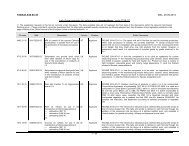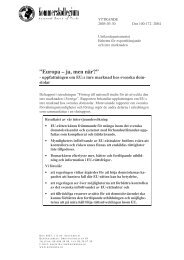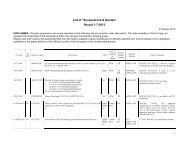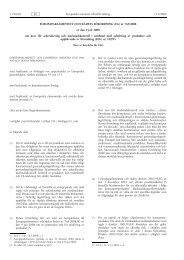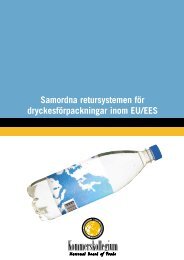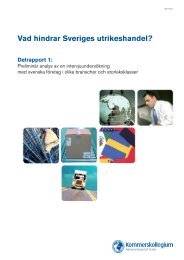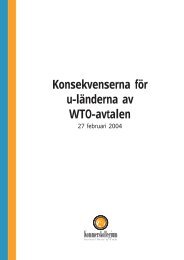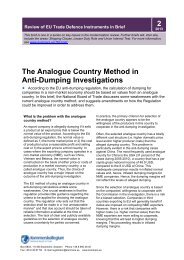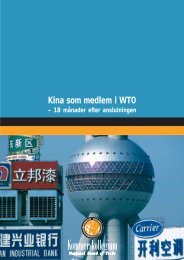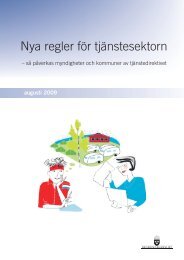Trade Facilitation - Impact and Potential Gains - Kommerskollegium
Trade Facilitation - Impact and Potential Gains - Kommerskollegium
Trade Facilitation - Impact and Potential Gains - Kommerskollegium
- No tags were found...
You also want an ePaper? Increase the reach of your titles
YUMPU automatically turns print PDFs into web optimized ePapers that Google loves.
2.2 Establishing Business AgreementIt is generally at this stage that an intermediary for the first time becomesinvolved. The Supplier usually, while negotiating the terms of business/contractcontracts a Credit-checking agency to verify the credit status of the Customer.There are two types of scenarios that are important to separate, a ”One-Offcontract” <strong>and</strong> a framework agreement. When comparing the costs of a transaction,the single trade transaction will appear to be much more intricate <strong>and</strong>costly than the framework transaction, due to the fact that in the latter, the termsof business <strong>and</strong> its accompanying costs have already been negotiated beforeh<strong>and</strong><strong>and</strong> are thus not as visible in the individual contract.2.3 OrderingThis phase normally begins when the Customer recognises a need for a product<strong>and</strong> places an Order under an established contact or a framework agreement. TheSupplier receives the order <strong>and</strong> responds. This response can be an acceptance,which leads to the issuing of a dispatch advise <strong>and</strong> sending of the invoice, or arejection, resulting in a change of the order until an agreement has been reached.Before the acceptance of an order, the supplier contacts an intermediary, if thishas not earlier been done, to make a Credit check.The negotiation between the Customer <strong>and</strong> the Supplier is a straightforwardprocess <strong>and</strong> trade facilitation measures have, apart from the possible interactionswith credit agencies, little marginal efficiency.2.4 ShipmentThe main focus of trade facilitation falls within the field of the actual movementof goods. The necessary preparations for enabling the goods to be delivered to theCustomer includes interactions with several new actors both governmental(Customs, licensing <strong>and</strong> certificating bodies, etc.) <strong>and</strong> various other intermediaries(insurer, custom broker, freight forwarder, carrier, chamber of commerce, etc.).Which processes <strong>and</strong> which parties that are involved, depends of course to a highdegree on the nature of the goods that are being traded. It is not uncommon thatespecially SMEs contract a custom broker who will then h<strong>and</strong>le the whole transport<strong>and</strong> Customs process.There are basically three main groups of actors involved: governmental bodies;insurers; <strong>and</strong> transport related intermediaries. The role of banks is also partlypresent, but the financing <strong>and</strong> payment aspect will be described in chapter 2.5.Figure 2 is a very simplified activity diagram of a ship-situation, showing themost basic processes involved. This scenario could be the transaction of someform of raw materials that compared with food products or livestock is verystraightforward.8



